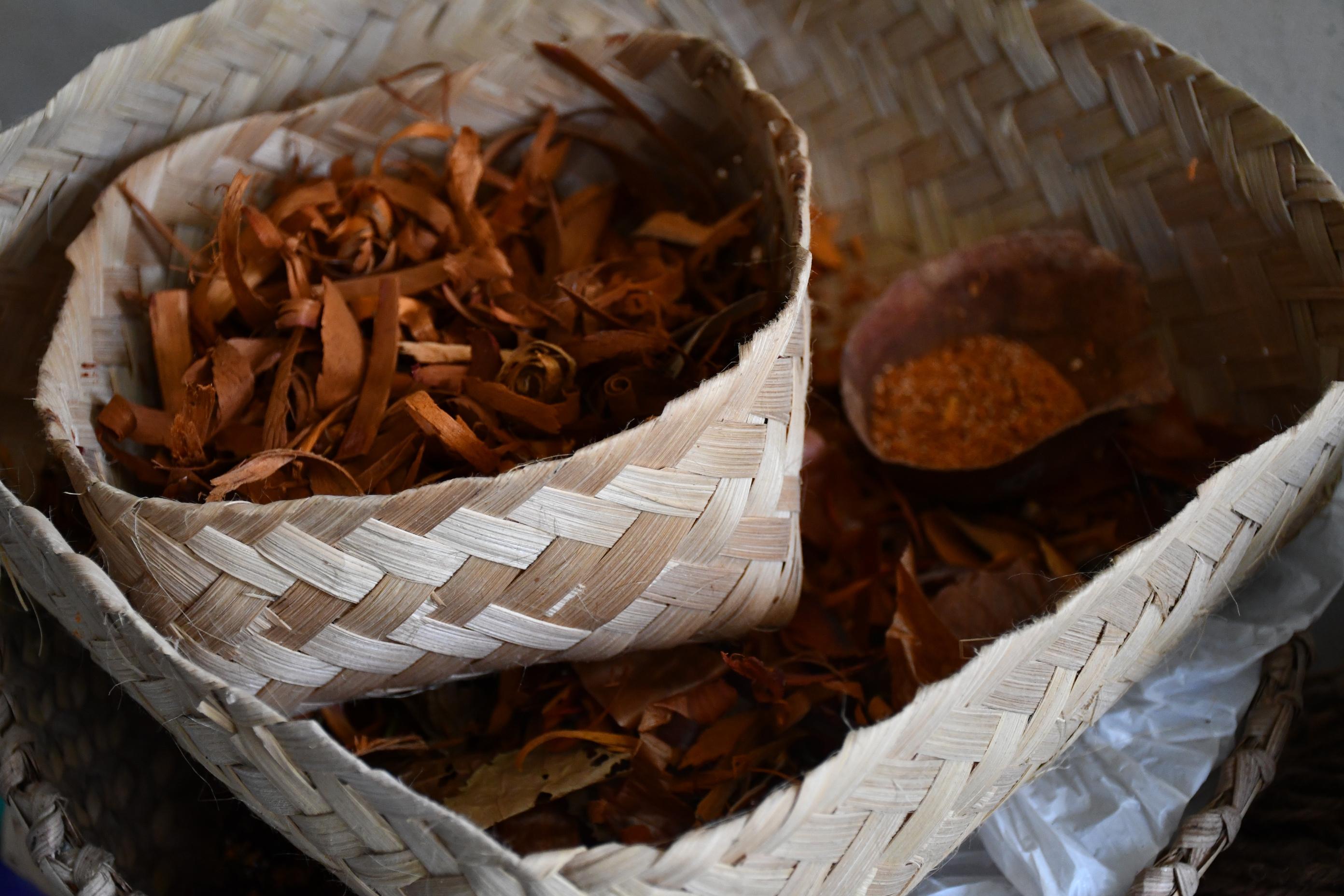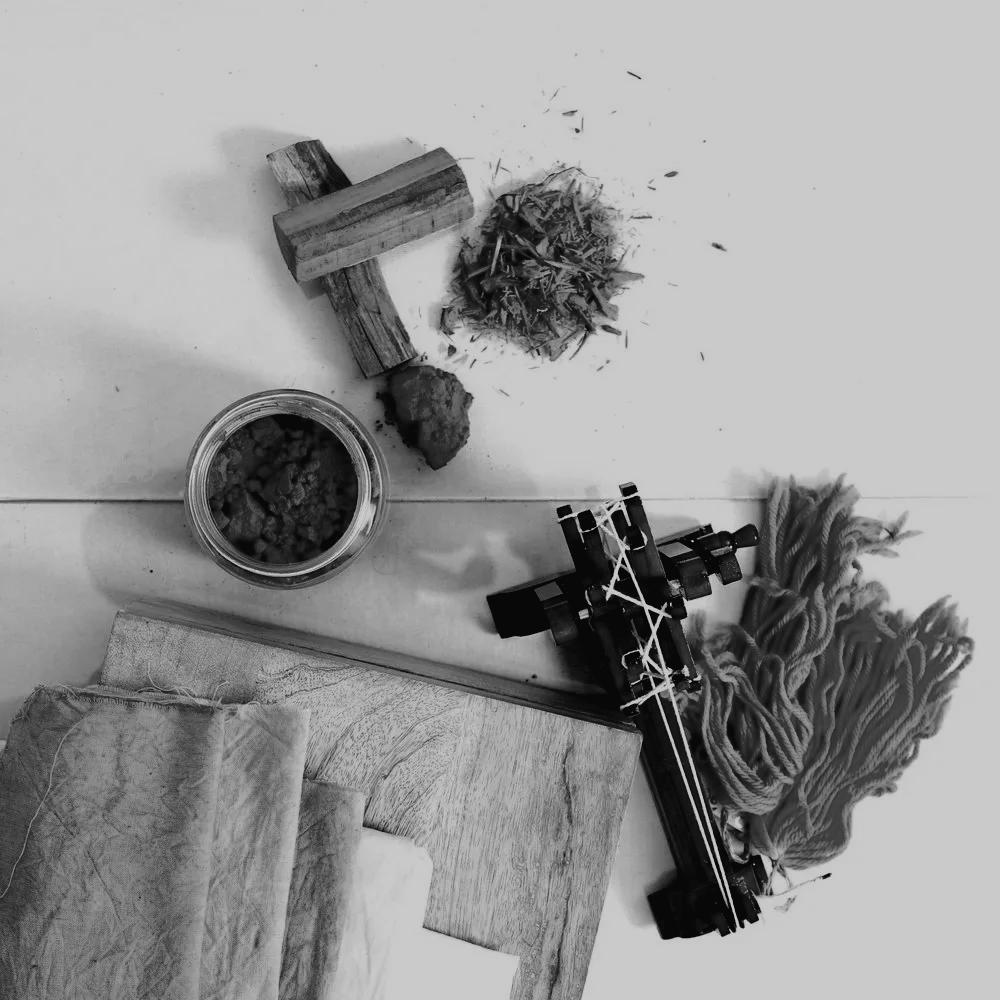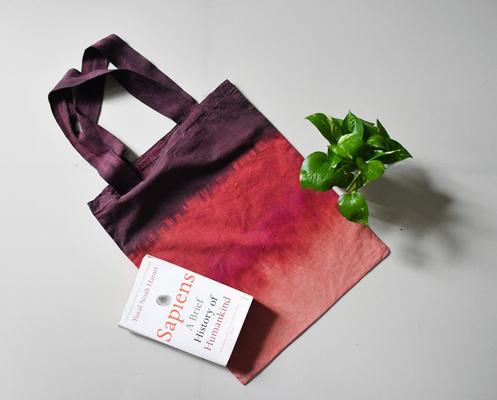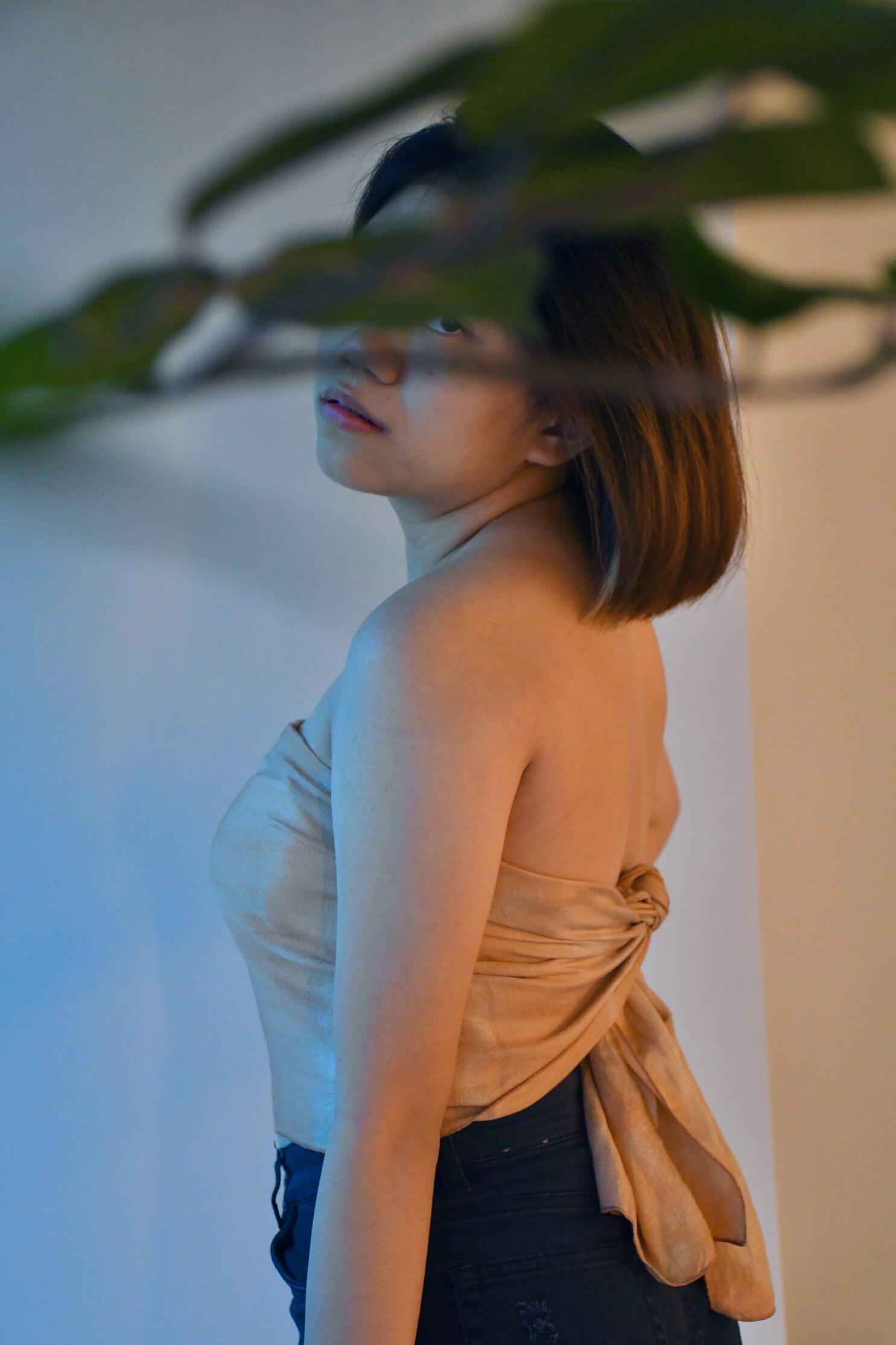POETRY CLOTH' – NATURAL DYEING & PRINTING TECHNIQUES TO PRODUCE INDIGENOUS TEXTILE DESIGNS
Author's Contribution
Content
Photography
Layout
I have undertaken a 3-day intensive workshop on "Poetry Cloth": Natural Dyeing and Printing Techniques to Produce Indigenous Textile Designs
Location:
CINTA BUMI ARTISANS, Ubud, Bali, Indonesia.

Dates: 27, 28, 29 July 2022
Together with Cinta Bumi Artisans I learned a lot about Bali's native plants, trees, and flowers that can be used to dye and print natural textile materials I was able to create a range of products like scarves pillow covers aprons and bandannas, all made with 100% silk, organic cotton, linen, and Tencel They were printed using motifs from dried flowers and leaves, resulting in a poetry of colors and patterns. Some textiles were modified and even dyed using natural indigo plant paste for different effects In addition to that, I developed a handstitched watercolor paper journal using the same dyeing and printing techniques used for textiles
MONICA SASIKUMAR | NOV 22 1
Natural Dyeing



After learning about the natural dyes, I prepared my own dye bath. I have done explorations on different types of cellulosic and protein yarns, fabric swatches, papers, and finished products Natural dyes are known for having wide applications in the coloration of most of the natural fibres, e.g., cotton, linen, wool, and silk, and are biodegradable, nontoxic, and non-allergenic. Unlike synthetic fibres, natural fibres are great absorbers
For dyeing I used TWO out of the three main sources of natural dyes Plant Dye: Leaves, flowers, bark, roots, seeds, pods, and fruits; Mineral Dye: Mud, ochre, limestone, and rust Due to sourcing and technical difficulties, animal dyes were omitted

02 03 04 01
2
Naturaldyesandmodifiersproduceanextraordinaryvarietyofshadesandcomplex colorsthatcomplementseachother.




3
Fabrics were pre-treated by scouring, mordanting with iron water (other options: Symplocos or soy), rolled using a wooden rolling pin and tied it with a jute string It is then steamed for 2 hours Two out of 3 were dyed Water colour paper was dyed with Marigold and Silk scarf was dyed with Sapaanwood Cotton was left un-dyed to see different effects on different materials Left overnight to allow the plant pigments bond before rinsing the fabrics with water and 1tsp of vinegar
Materials used:
100% Silk, 100% Cotton and 140 lb/300gsm watercolor paper or printmaking paper
Assortment of leaves, flowers, barks, and seed pods
Iron-water (optional)
Water or dye bath (to add extra colour)
bundle dyeing
Bundle dying is a method of placing plant materials onto the fabric, rolled or folded up tightly, tie it with string, and steam it to release the colours from the botanicals into the fabric.

Dipping the fabric in iron water tends to create black-and-white or monochromatic prints. Each shape comes out to be unique and nonidentical, and the color of the plant is often different from the color it releases or prints

1 2 3. 4 5 6
E C O P R I N T 4
SILK SCARF
STEAMED AND THEN DYED WITH SAPANWOOD

BOTANICAL bundle dyeing
ECO -PRINTING
5
COMPOSITION DEMONSTRATION
Prepared (mordant) fabric or paper is laid flat on the surface and leaves/flowers/pods are arranged in a enticing way. Ferns, rose leaves & petals, tulip petals, aquilegias, eucalyptus, onion skins sappanwood chips were used for watercolour paper bundle dyeing



BUNDLING AND DYEING
Next is rolling the bundle around a stick and binding with twine. In case of a fabric it can folded in half to cover the leaves Finished bundles can be steamed for 2 hours. Turning the bundle every half an hour will ensure the colour takes evenly The bundle can also be dyed to achieve a darker background colour
Once your bundle has finished steaming, it is left overnight before unwrapping to give the shades one last chance to intensify
THE JOY OF UNBUNDLING
6
The real beauty of hand-made is seen through their imperfections

J.
J O U R N A L M A D E W I T H W A T E R C O L O U R P A P E R U S I N G B U N D L E - D Y E D ( E C O - P R I N T ) T E C H N I Q U E
7
Indigo dyeing

Natural indigo paste produced from the plant 'Indigofera Tinctoria' was used for dyeing The wastewater generated during the indigo dye collection process was recycled. The waste water, when released back into the soil, does not degrade but keeps it fertile.
Working with plant-based indigo dye was enthralling Natural indigo paste produced from the plant 'Indigofera Tinctoria' was used for dyeing The wastewater generated during the indigo dye collection process was recycled The waste water, when released back into the soil, does not degrade but keeps it fertile. When the fabric is immersed for the first time, the color remains green until the air oxidizes it The process was repeated until a deeper, darker blue color was achieved The fabric was left to sit for at least 20 minutes so it could oxidize in the air Then the knots were opened and hung to dry.

P L A N T I N D I G O F E R A T I N C T O R I A 8
TIE DYE WITH INDIGO

I N D I G O F E R A T I N C T O R I A
9
Mordant painting
Materials
Pre-treated fabric or paper Dye bath (immersion dye recipe)

For mordant paste
40 grams symplocos
200 ml water
2 grams guar gum
40 grams wheat bran + water
Drawing a motif onto the fabric or papera and to oxidise properly it is then left to dry. Soaking it in the wheat bran bath help to naturalise the paste and let it stick with the fabric. After rinsing it well, the painted fabric or paper is put into the dye bath for 30 - 60 minutes. Then the fabric is squeezed without rinse, dried in the shade.

M A R K - M A K I N G )
(
10
After dyeing with Sappanwood

11
leaf pounding
The act of pounding the fabric was cathartic and released negative energy and trapped feelings
Leaves and flowers were placed between two strips of 100% cotton muslin cloth with fabric side up and together hammered with an iron mallet. As the mallet strikes the leaf, the chlorophyll is released from the leaf and absorbed by the fabric giving wide range of colours and unique shapes Fresh, dark green leaves make better designs


E C O P R I N T
12


M a r i g o l d PANTONE 12-0715 TCX Marigold Yellow I M M E R S I O N T I ED Y E 13
Sappanwood



14 B I A N C A E A S A P P A N
100% Cotton tote bag 40

x 37 | 240 gms
Pre-treated, dyed with SAPAANWOOD and using tie-dye modified with vinegar (apple cider) to get lighter shade and iron water to get darker shade. Then finished and dried under shade
SAPAANWOOD chips are used to dye fabrics and to make tea Sappan wood benefits are popular due to its antibacterial and anticoagulant properties, which are preferred by many medicinal practices

100% Tencel pillow cover

20 x 20 | 130 gms
Pre-treated and tie-dyed (tied using rubber bands) with SAPAANWOOD
15
Avocado pits
150g of fibers were used on 150-200 grams of avocado pits to make sure we get as much color as possible 1:1 ratio
Avocados have a great advantage over other dyes as they contain tannins They are natural mordants for dyeing fabric so the colour won’t run off in few washes The fibre is introduced to aluminium stone or 12 teaspoons of aluminium powder to strengthen, make the colour stronger and even more long lasting Ranging the PH (acidic or alkali) of the water by adding baking soda adds depth of colour.

16



 ROSE QUARTZ PANTONE 13-1520
ROSE QUARTZ PANTONE 13-1520
A V O C A D O P I T S T I E D Y E 17
COTTON-LINEN BLEND SCARF






































 ROSE QUARTZ PANTONE 13-1520
ROSE QUARTZ PANTONE 13-1520
